
The wormwood pug is a moth of the family Geometridae. The species was first described by Carl Alexander Clerck in 1759. It is a common species across the Palearctic region as well as North America.

The scalloped hazel is a moth of the family Geometridae. The species was first described by Carl Alexander Clerck in 1759.

The mottled umber is a moth of the family Geometridae. It is common throughout much of the Palearctic region. The species was first described by Carl Alexander Clerck in 1759.

Callistege mi, the Mother Shipton moth, is a moth of the family Erebidae. It was classified by Carl Alexander Clerck in 1759, and is also known under the name of Euclidia mi. In Finnish it is known as piirtoyökkönen and in German as Scheck-Tageule.
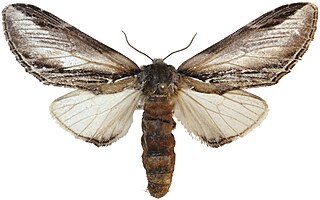
Pheosia tremula, the swallow prominent, is a moth from the family Notodontidae. The species was first described by Carl Alexander Clerck in 1759.

The hornet moth or hornet clearwing is a large moth native to Europe and the Middle East and has been introduced to North America. Its protective coloration is an example of Batesian mimicry, as its similarity to a hornet makes it unappealing to predators. The hornet moth has been linked to the large dieback of poplar trees across Europe because its larvae bore into the trunk of the tree before re-emerging as adults.
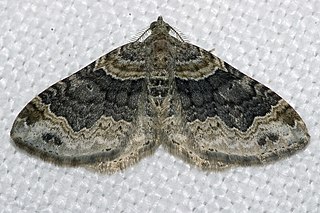
Xanthorhoe ferrugata, the dark-barred twin-spot carpet, is a moth of the genus Xanthorhoe in the family Geometridae. It was first described by Carl Alexander Clerck in 1759 and has a Holarctic distribution.

Agrochola lota, the red-line Quaker, is a moth of the family Noctuidae. The species was first described by Carl Alexander Clerck in 1759. It is distributed throughout the whole of Europe except Scandinavia; in Armenia, Asia Minor, and east across the Palearctic to the Altai mountains and western Siberia.It was introduced to Newfoundland. In the Alps, it rises at altitudes of just over 1500 metres.

Lithacodia uncula, the silver hook, is a moth of the family Noctuidae. The species was first described by Carl Alexander Clerck in 1759. It is found in the Palearctic realm.

Anacampsis populella is a moth of the family Gelechiidae, which is native to Europe and has been accidentally introduced to North America. It was first described in 1759 by Carl Alexander Clerck, a Swedish entomologist. The type specimen is from Sweden. The foodplants of the larvae are poplars and willows.

Paramesia is a genus of moths belonging to the family Tortricidae.

Acompsia cinerella, the ash-coloured sober, is a small lepidopteran species of the twirler moth family (Gelechiidae). It is the type species of the genus Acompsia, once assigned to the subfamily Anacampsinae but generally placed in the Dichomeridinae. The species was first described by Carl Alexander Clerck in 1759.

Epinotia nisella is a moth of the family Tortricidae which is found in the Palearctic, Europe and North America. It was first described by Carl Alexander Clerck in 1759.
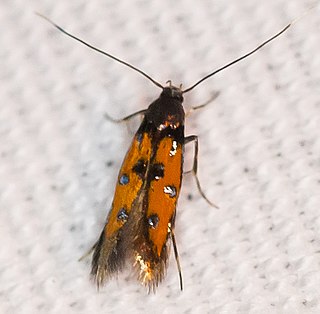
Chrysoclista linneella, is a moth of the family Agonoxenidae found in Europe and North America.

Macaria carbonaria, the netted mountain moth, is a moth of the family Geometridae. The species was first described by Carl Alexander Clerck in 1759. It is found in the northern part of the Palearctic realm.
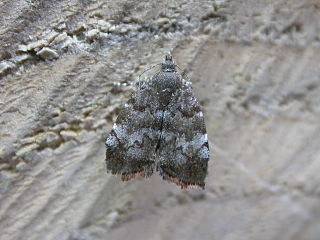
Choreutis pariana, the apple-and-thorn skeletonizer or apple leaf skeletonizer, is a moth of the family Choreutidae. The moth was first described by the Swedish entomologist Carl Alexander Clerck in 1759. It is native to Eurasia and was introduced to New England, USA in 1917.

Aethes hartmanniana, the scabious conch, is a moth of the family Tortricidae. It was described by Carl Alexander Clerck in 1759. It is found in most of Europe, Asia Minor, Armenia and the southern Urals. The species occurs in chalky and limestone habitats.
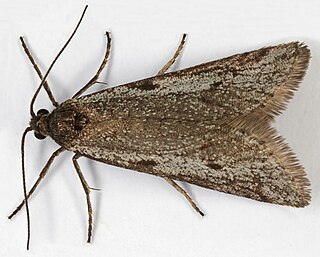
Exapate congelatella is a moth belonging to the family Tortricidae. The species was first described by Carl Alexander Clerck in 1759.

Pammene rhediella is a moth belonging to the family Tortricidae. The species was first described by Carl Alexander Clerck in 1759.
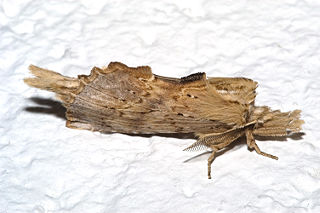
Pterostoma is a genus of moths belonging to the family Notodontidae.




















